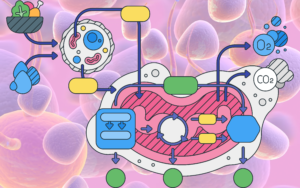Welcome to a captivating journey into the heart of life itself! In this article, we will delve deep into the intriguing world of “cells,” the building blocks of all living organisms. Cells are the microscopic powerhouses that orchestrate the symphony of life, holding the secrets to our existence and well-being. From the towering redwood trees to the tiniest microorganisms, every living being owes its existence to these remarkable units of life. So, join us as we explore the wonders of cell biology, unraveling the mysteries of their structure, functions, and the profound impact they have on human health.
At the very core of life’s grand tapestry lies the enigmatic realm of cells. These microscopic wonders, invisible to the naked eye, serve as the foundation upon which the complexity of life is built. The cell’s intricate architecture, with its membrane-bound organelles and genetic instructions safely stored within the nucleus, houses the blueprints for all life-sustaining processes. Without these minuscule powerhouses, life as we know it would cease to exist.
Imagine the cell as a bustling metropolis, with organelles performing their specialized tasks akin to skilled artisans. The mitochondria tirelessly generate energy, providing the fuel necessary for life’s continuous dance. The endoplasmic reticulum diligently assembles proteins, the architects of growth and repair. Meanwhile, the Golgi apparatus orchestrates the packaging and distribution of these vital molecular creations. As we venture further into this captivating cellular orchestra, we begin to comprehend how the harmonious coordination of these microscopic players determines our very being.
In this article, we will navigate through the awe-inspiring landscape of cell biology, shedding light on its significance in human health, disease prevention, and medical advancements. As we uncover the secrets of cells, we embark on an exhilarating quest to appreciate the profound impact these tiny wonders have on shaping the intricate tapestry of life. So, tighten your seatbelts, and get ready to explore the mesmerizing microcosmos of cells that has captivated the curiosity of scientists and curious minds alike for generations.
Table of Contents
1. What are Cells?

Cells are the basic structural and functional units of life. They are so small that they can only be seen under a microscope. Each organism is made up of one or more cells, and the complexity of an organism often depends on the number of cells it possesses. Cells contain all the necessary components to carry out essential life processes, such as metabolism, growth, and reproduction.
Cells come in an astounding array of shapes, sizes, and functions, showcasing the remarkable diversity that exists within the living world. In the animal kingdom, nerve cells exhibit long, branching structures that enable rapid communication across the body, while muscle cells contract and relax, providing the physical force behind movement. On the other hand, plant cells boast rigid cell walls and chloroplasts, the green pigment-filled organelles responsible for photosynthesis. Even within a single organism, different cells perform distinct tasks, highlighting the intricacies of specialization in cellular biology.
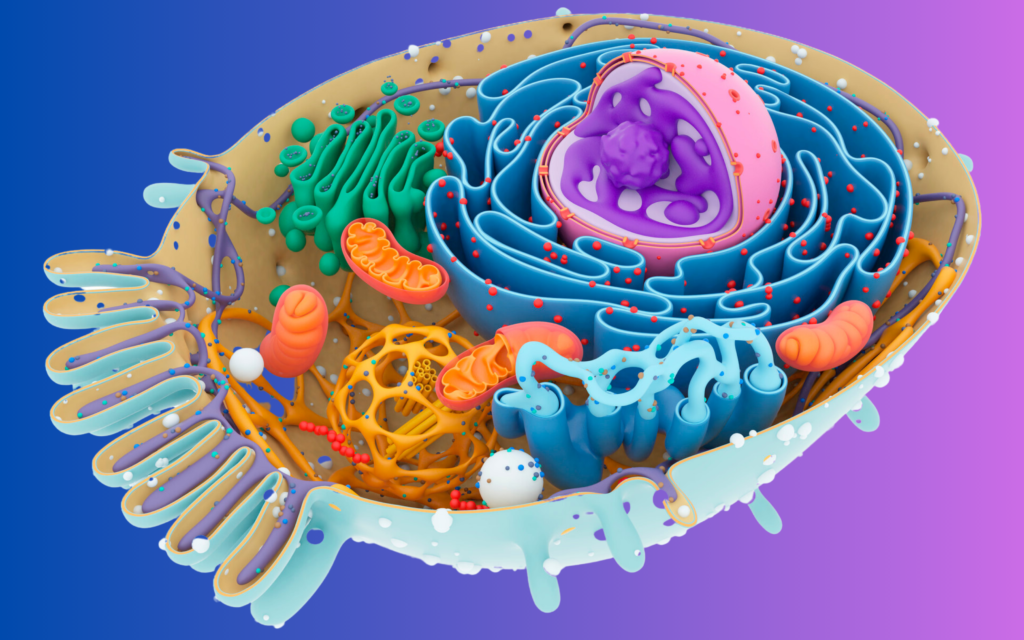
Life is a dance of harmony, and cells play a pivotal role in maintaining the delicate balance required for survival. Through a process known as homeostasis, cells regulate their internal environment to ensure optimal conditions for vital processes. They finely adjust their chemical composition, pH levels, and temperature to safeguard against external disturbances. Additionally, cells have the extraordinary ability to adapt to changing conditions, enabling them to thrive in diverse environments, from the scorching heat of deserts to the icy depths of the oceans. These adaptive mechanisms are crucial for the survival and evolution of species across the globe.
In the vast symphony of life, cells communicate with one another, forming a complex network that allows multicellular organisms to function harmoniously. The language of cell communication involves a series of chemical signals, molecular messengers, and receptors. This intricate interplay enables cells to coordinate activities, such as immune responses, tissue repair, and growth. Moreover, cell communication plays a significant role in the development of multicellular organisms, ensuring that cells differentiate into specific types and organize themselves into tissues and organs. Understanding these communication pathways has profound implications in medical research, as disruptions in cell signaling can lead to diseases like cancer and autoimmune disorders.
2. Cell Structure

The cell, as the basic unit of life, boasts a remarkable and intricate structure that underpins the foundation of all living organisms. Enclosed within a delicate cell membrane, the interior teems with a bustling network of organelles, each with a distinct role in maintaining the cell’s functionality. At the heart of it all lies the nucleus, the “control center” that harbors the genetic blueprint essential for directing cellular activities. With a diverse array of cell types across various organisms, their structures may vary, but the shared fundamentals of cell architecture ensure the continuity of life on Earth.
Within the mesmerizing microcosm of a cell, countless organelles work in harmony to ensure seamless operations. The mitochondria, renowned as the “powerhouses” of the cell, are responsible for generating adenosine triphosphate (ATP), the energy currency that fuels cellular activities. Meanwhile, the endoplasmic reticulum, resembling an extensive network of passageways, facilitates the synthesis and transport of proteins. The Golgi apparatus, akin to a bustling shipping center, packages and dispatches these proteins to their designated destinations within and beyond the cell. Together, these organelles orchestrate a delicate symphony, allowing the cell to perform its essential functions.
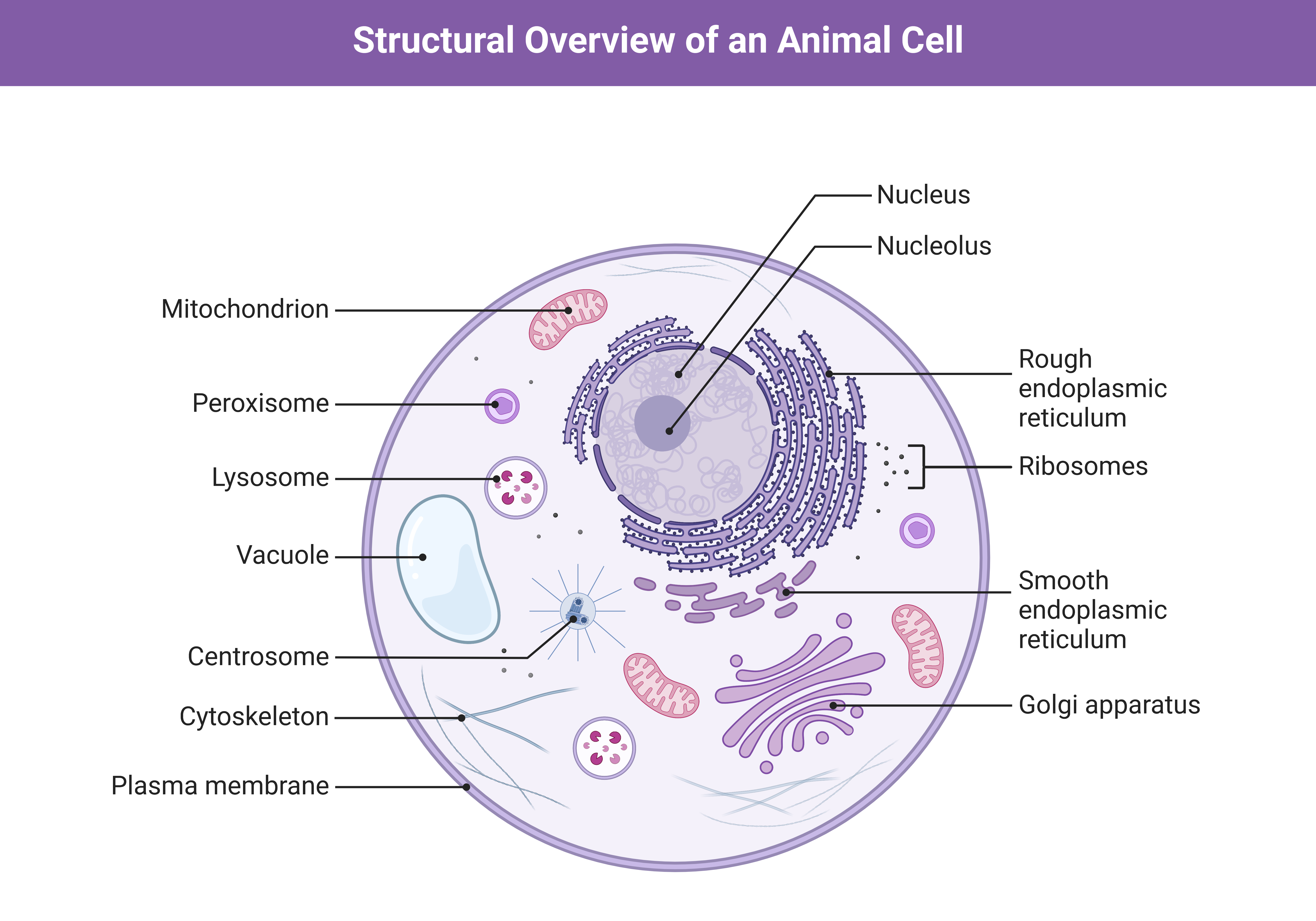
The cell membrane, often likened to a selective gatekeeper, plays a pivotal role in maintaining cellular integrity and regulating the flow of substances. It is comprised of a phospholipid bilayer interspersed with proteins, forming a semipermeable barrier. This barrier allows for the controlled transport of nutrients and waste products in and out of the cell. Beyond its functional significance, the cell membrane also hosts receptors that enable the cell to respond to external signals, a process vital for cellular communication and coordination.
i) The Nucleolus and Nucleus
The nucleus, the command center of eukaryotic cells, and its crucial component, the nucleolus, play fundamental roles in maintaining cell function and overall homeostasis. The nucleus, enclosed by a double membrane, houses the cell’s genetic material, DNA, orchestrating gene expression and controlling essential cellular activities. Acting as the nucleus within the nucleus, the nucleolus is a prominent substructure responsible for ribosome biogenesis. Through the synthesis and assembly of ribosomal subunits, the nucleolus ensures efficient protein production, making it a vital hub for cellular growth and proliferation. Additionally, it regulates cell stress responses, further emphasizing its significance in cellular health. Understanding the intricate interplay between the nucleus and nucleolus not only unveils the inner workings of the cell but also sheds light on potential therapeutic targets for various diseases, making this knowledge invaluable in the realms of biology and medicine.

ii) The Mighty Ribosome
Ribosomes, the remarkable cellular organelles, are indispensable components of all living organisms. These small, complex structures play a pivotal role in protein synthesis, the fundamental process by which cells generate the proteins essential for life’s diverse functions. Consisting of a large and small subunit, ribosomes work in unison, decoding genetic information from messenger RNA (mRNA) and translating it into specific amino acid sequences that form proteins. Through this intricate mechanism, ribosomes ensure the accurate assembly of proteins with precision and efficiency. An awe-inspiring feat of nature, the ribosome’s function extends beyond mere biological relevance; its insights have revolutionized medicine and biotechnology. Understanding ribosomes not only deepens our knowledge of the molecular workings of life but also holds the potential to unlock therapeutic breakthroughs and address diseases at their core.

iii) The Versatile Vesicle
Vesicles are membrane-bound sacs that play diverse roles in cellular functions. They transport and store substances within the cell and are involved in processes such as exocytosis (releasing substances outside the cell) and endocytosis (bringing substances into the cell).
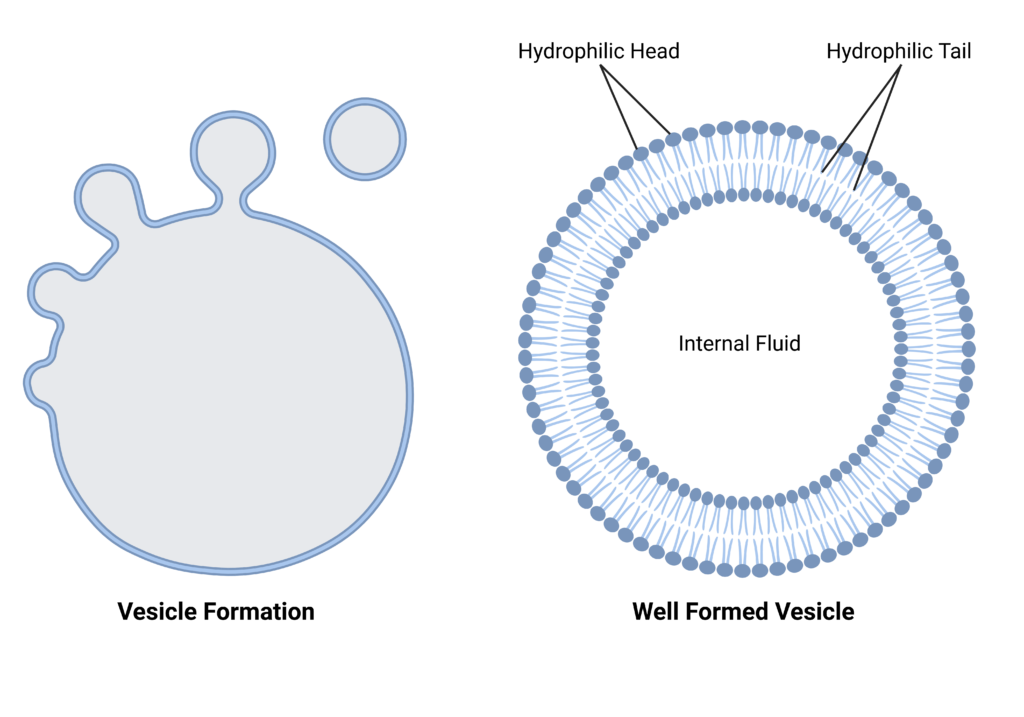
These versatile compartments act as cellular messengers, ensuring the timely delivery of essential molecules to their designated destinations.
iv) The Intriguing Endoplasmic Reticulum
Within the intricate world of cells, two essential players stand out: the rough endoplasmic reticulum (RER) and the smooth endoplasmic reticulum (SER). These specialized structures, resembling an extensive network of tubules and membranes, play crucial roles in various cellular processes, each contributing uniquely to the cell’s functionality.
a) Rough Endoplasmic Reticulum
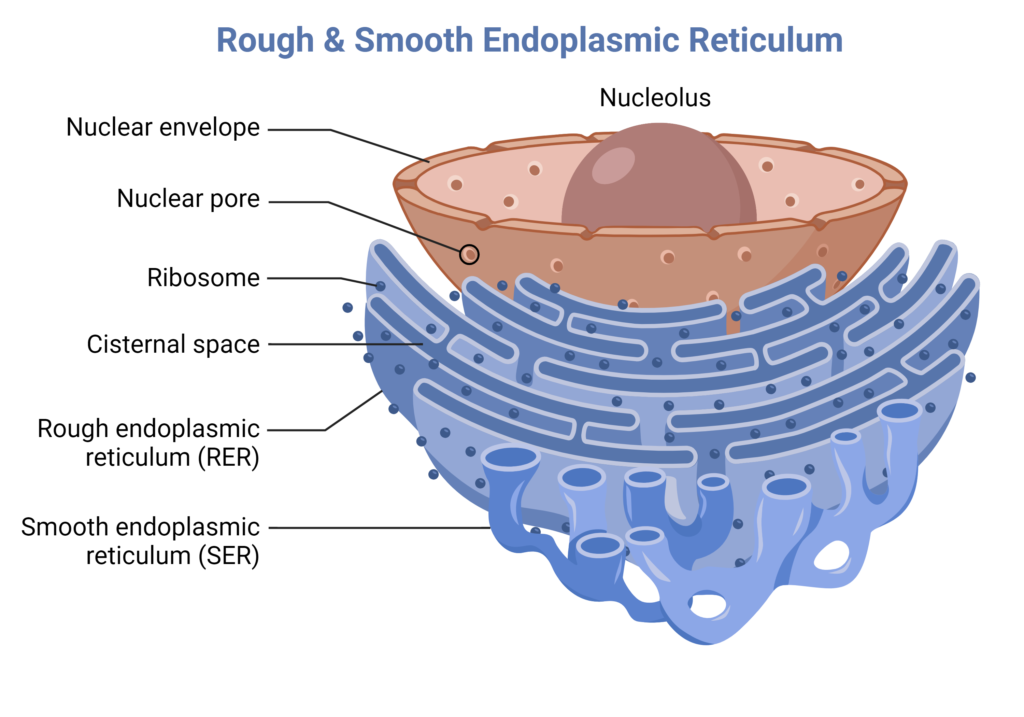
b) Smooth Endoplasmic Reticulum
The rough endoplasmic reticulum, as its name suggests, is studded with ribosomes on its surface, giving it a “rough” appearance under the microscope. These ribosomes are responsible for protein synthesis, a vital function that fuels the growth, repair, and regulation of the cell. As proteins are produced on the RER’s ribosomes, they are subsequently folded and processed within the reticulum’s lumen. Once the proteins attain their proper conformation, they are sent off to their designated locations within the cell or exported outside, enabling them to perform essential tasks that sustain life.
On the other hand, the smooth endoplasmic reticulum lacks ribosomes and appears “smooth” in structure. Despite its absence of direct involvement in protein synthesis, the SER boasts an equally significant portfolio of functions. It plays a vital role in lipid metabolism, where it synthesizes various lipids, including phospholipids and cholesterol. Additionally, the smooth endoplasmic reticulum participates in detoxification processes, aiding in the breakdown of harmful compounds in the cell. Moreover, it serves as a reservoir for calcium ions, crucial for triggering various cellular responses.
v) The Master Organizer: Golgi Apparatus
The Golgi Apparatus, an intricate and essential organelle found within eukaryotic cells, plays a central role in intracellular transport, modification, and sorting of proteins and lipids. Named after its discoverer, Camillo Golgi, this membranous structure consists of a series of stacked flattened sacs, known as cisternae, and operates as a dynamic and highly regulated cellular hub. Functioning as the cell’s post office, the Golgi Apparatus receives newly synthesized proteins and lipids from the endoplasmic reticulum, where they undergo crucial modifications, such as glycosylation, phosphorylation, and sulfation. This process enables them to acquire specific functional characteristics and aids in their proper sorting for subsequent distribution to various cellular destinations. Whether it’s the secretion of enzymes, the formation of lysosomes, or the construction of cell membranes, the Golgi Apparatus ensures that each component reaches its designated location with precision. Understanding the Golgi Apparatus is pivotal for unraveling cellular pathways, disease mechanisms, and therapeutic targets, making it an intriguing subject of study in the field of cell biology.

vi) The Structural Scaffold: Cytoskeleton
The cytoskeleton, an intricate network of protein filaments, plays a pivotal role in the structural integrity and functional dynamics of eukaryotic cells. Comprising three major components – microtubules, microfilaments, and intermediate filaments – this cellular scaffolding system provides mechanical support, intracellular transport, and cellular motility. Microtubules, composed of tubulin subunits, form long, hollow tubes that facilitate organelle positioning and mitotic spindle formation during cell division. Meanwhile, actin-based microfilaments, constructed from actin monomers, facilitate cellular contraction, cell shape maintenance, and cellular locomotion. Intermediate filaments, constituted by various proteins, contribute to cell stability and protect against mechanical stress. These three elements synergistically coordinate to establish cell shape, transport cellular components, and orchestrate cell movement, processes vital for tissue development and organismal physiology. Understanding the cytoskeleton’s intricacies not only advances our grasp of cell biology but also holds promise in the therapeutic targeting of diseases that stem from cytoskeletal dysregulation.
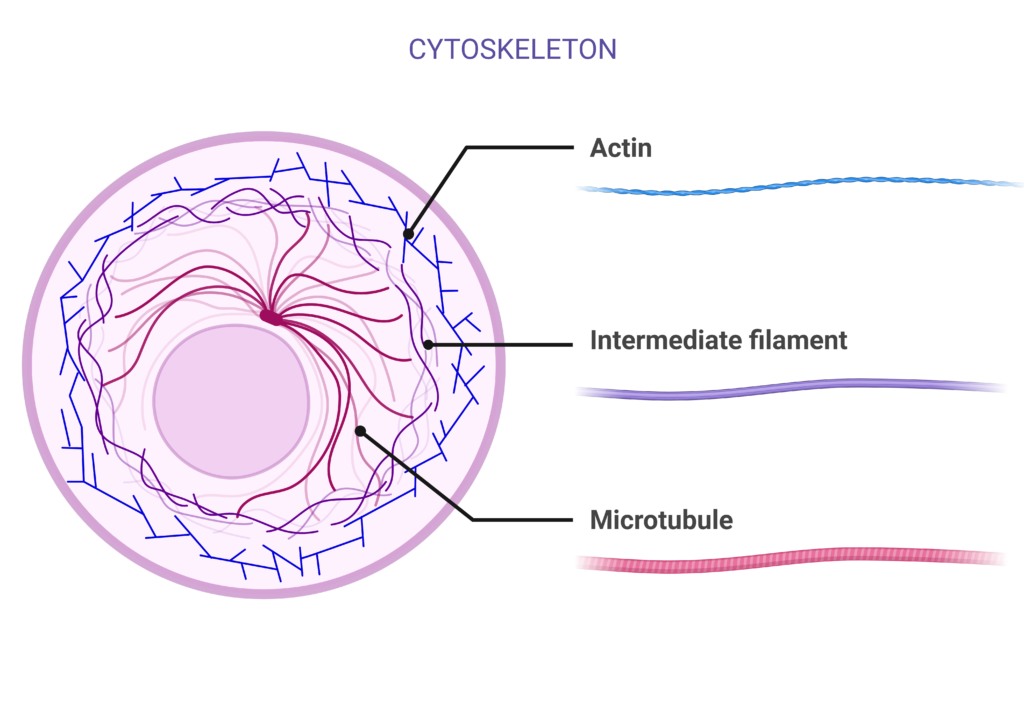
viii) Powerhouses of the Cell: Mitochondria
Mitochondria, often referred to as the “powerhouses of the cell,” generate energy through cellular respiration. They produce adenosine triphosphate (ATP), the primary energy currency used to fuel cellular activities.

Additionally, mitochondria are unique as they contain their own DNA, providing vital insights into evolutionary history and hereditary diseases.
viv) The Essential Vacuole, Cytosol, Lysosome, and Centriole
The vacuole, a membrane-bound sac, stores various substances, playing a key role in maintaining cell turgidity and regulating ion and water balance.
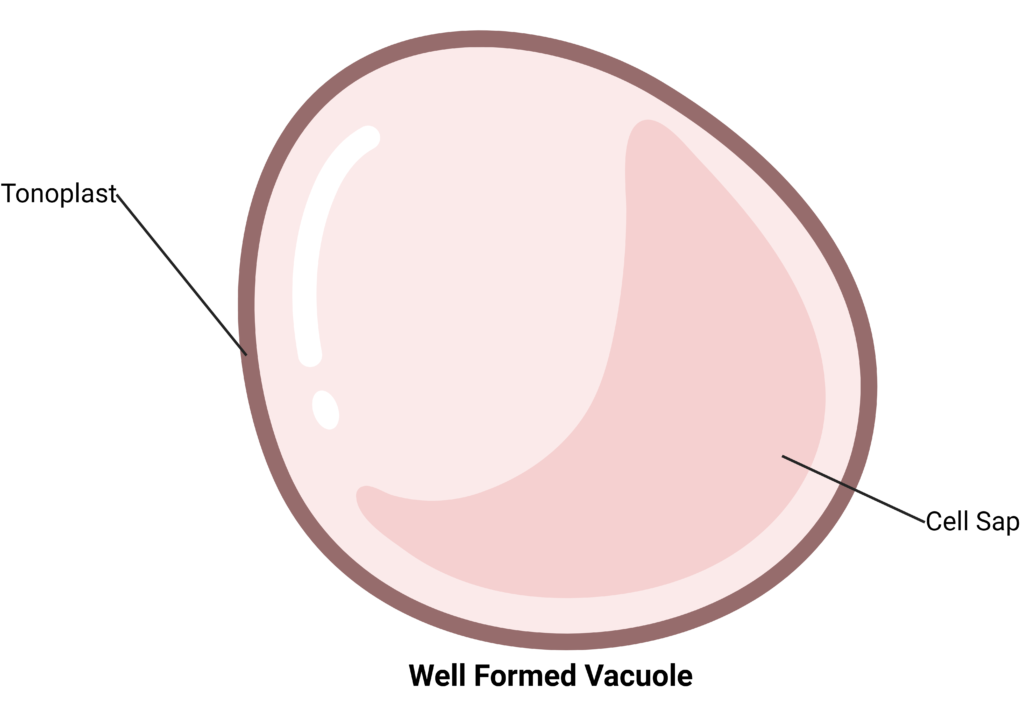
Cytosol, the gel-like substance within the cell, facilitates numerous chemical reactions and serves as the site for cellular metabolism.
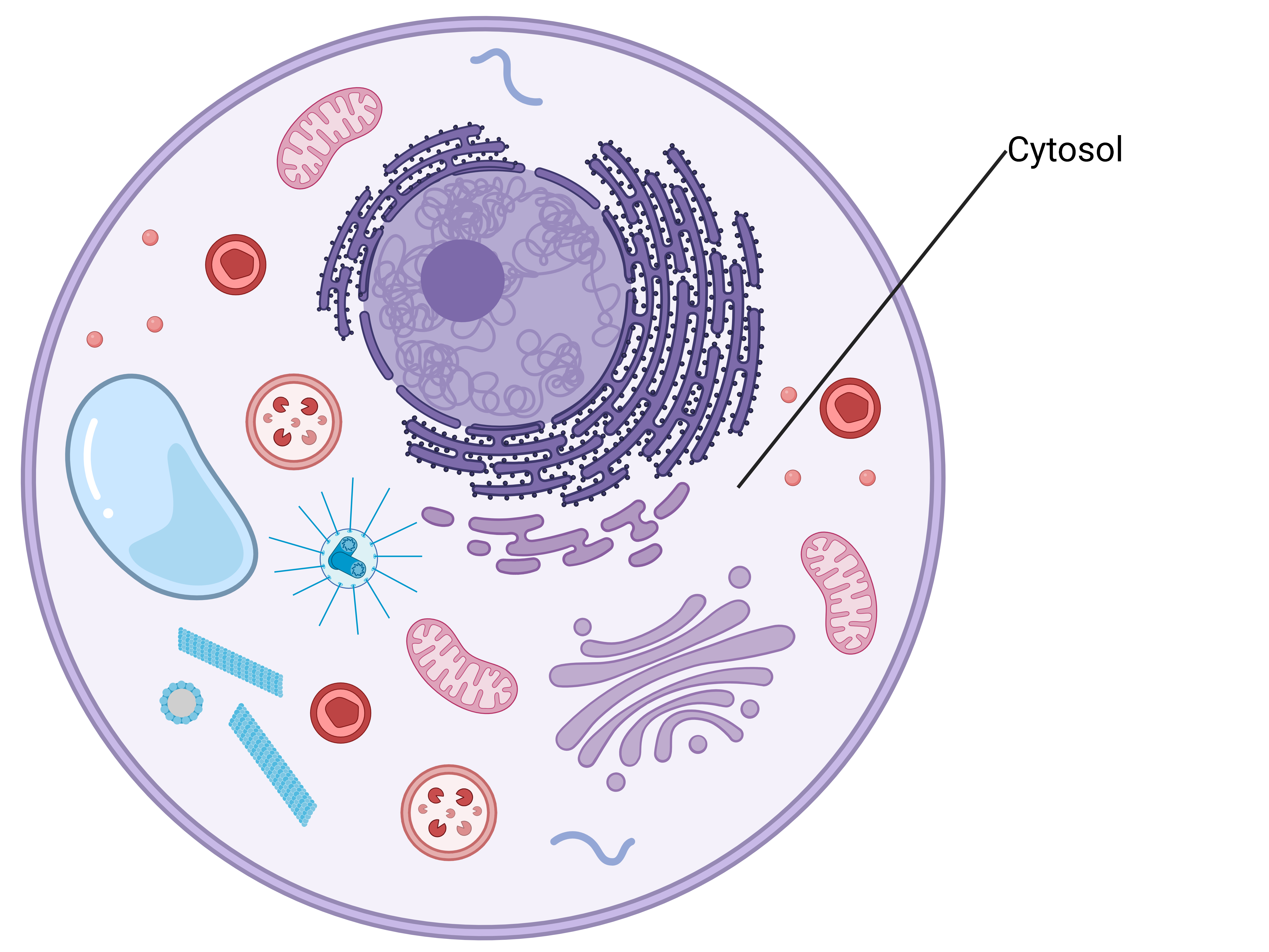
Lysosomes, the cell’s recycling centers, contain enzymes that break down waste materials and cellular debris, ensuring efficient cellular maintenance.

Finally, centrioles, present primarily in animal cells, aid in cell division by organizing microtubules and ensuring the correct distribution of genetic material.

Understanding the intricacies of cell structure is instrumental in various scientific disciplines, such as medicine, genetics, and biotechnology. Research on cell biology has unraveled the mysteries behind numerous diseases and has led to groundbreaking advancements in medical treatments and therapies. The microscopic world of cells continues to captivate scientists, as they strive to uncover the hidden complexities of life at its most fundamental level. As we peer through the microscope lens, we gain profound insights into the wonders of the cell, an extraordinary testament to the marvels of nature’s design.
3.Types of Cells

Cells, the fundamental units of life, come in various types, each contributing to the diversity of living organisms. These microscopic wonders serve as the building blocks that construct all living beings on Earth. Through this exploration of different cell types, we will gain insights into their unique structures and functions, unraveling the intricacies of life’s marvelous complexity.
Prokaryotic Cells
Prokaryotic cells are among the simplest and most ancient forms of life. Lacking a true nucleus and membrane-bound organelles, these cells are found in bacteria and archaea.
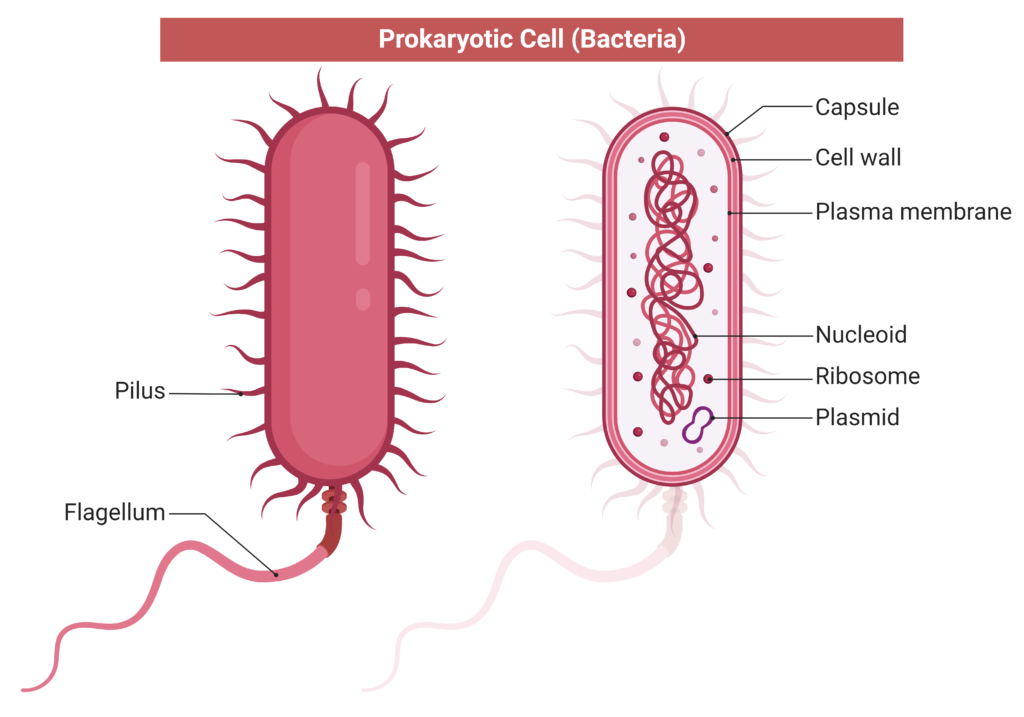
Despite their simplicity, prokaryotic cells exhibit astonishing adaptability, thriving in diverse environments from extreme heat to freezing cold.
Eukaryotic Cells
Eukaryotic cells represent a more complex and evolved form of cellular life. They possess a defined nucleus, where the genetic material is stored, surrounded by a membrane.
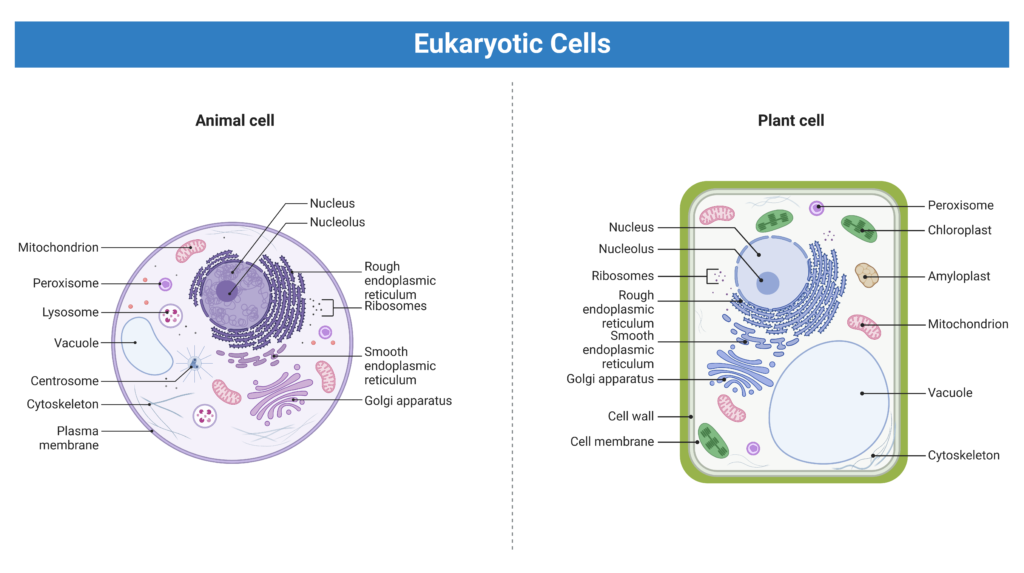
Eukaryotic cells are the building blocks of all multicellular organisms, including plants, animals, and fungi, and are characterized by specialized organelles that enable various cellular functions.
Plant Cells
Plant cells are eukaryotic cells that form the foundation of plants’ structure and function. These cells contain chloroplasts, the organelles responsible for photosynthesis, which converts sunlight into energy.
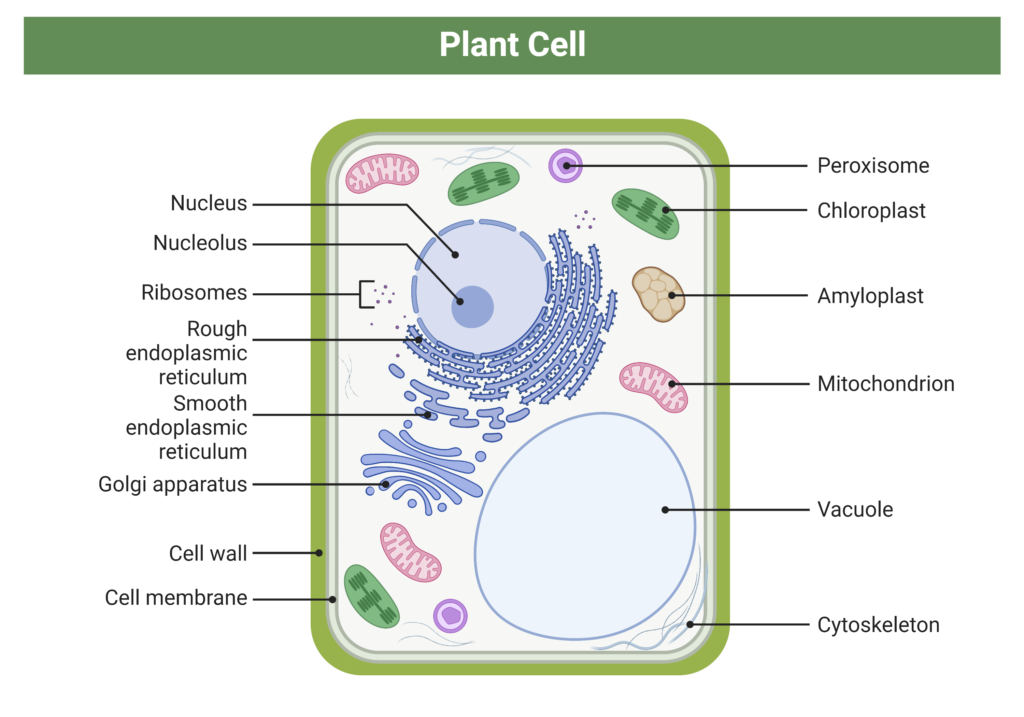
Plant cells also feature a rigid cell wall made of cellulose, providing structural support and protection.
Animal Cells
Animal cells are another type of eukaryotic cell, constituting the basis of all animal tissues and organs. Unlike plant cells, they lack a cell wall and possess centrioles, which play a crucial role in cell division.
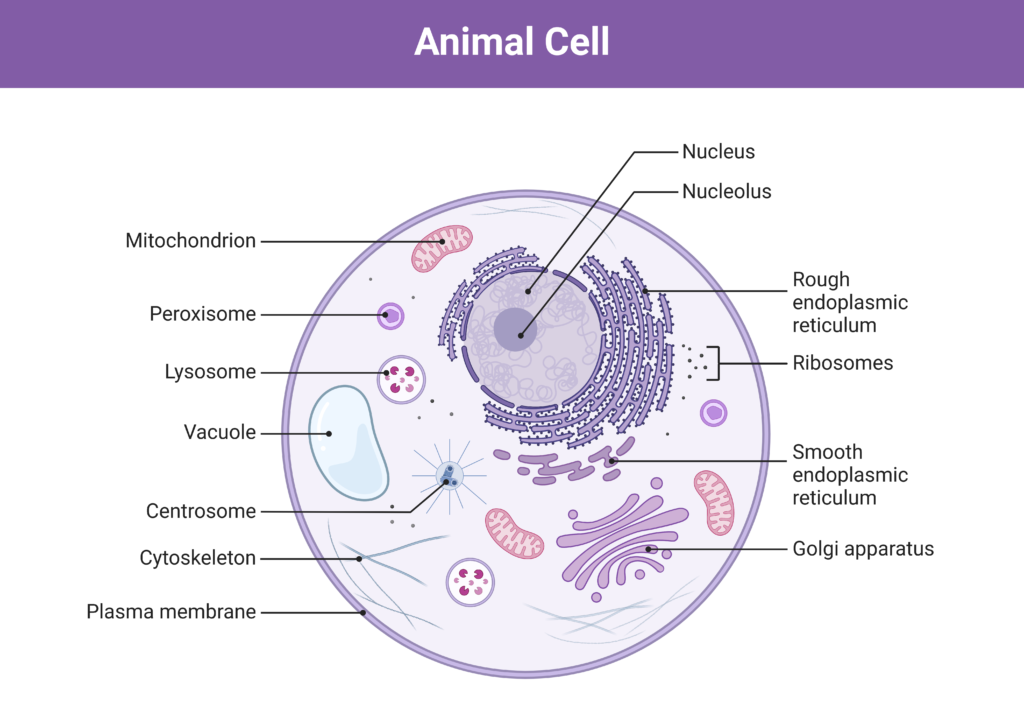
These versatile cells form the basis for the diverse range of animals found throughout the world.
Stem Cells
Stem cells are a unique group of cells characterized by their ability to differentiate into various specialized cell types.
They hold tremendous promise in regenerative medicine and are actively studied for their potential in treating numerous diseases and injuries.
Nerve Cells (Neurons)
Nerve cells, also known as neurons, are the core components of the nervous system.

These specialized cells are responsible for transmitting electrical signals between different parts of the body, enabling communication and coordination.
Muscle Cells
Muscle cells, or myocytes, are dedicated to the movement of the body.
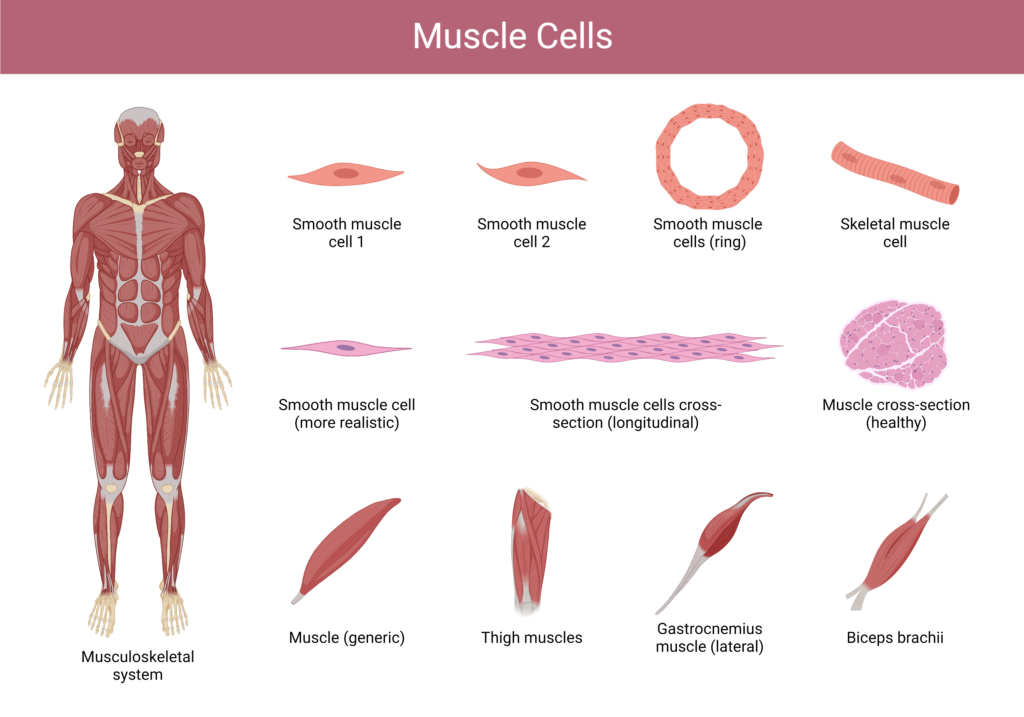
They contract and relax to generate force, allowing animals to perform physical actions such as walking, jumping, and even breathing.
Blood Cells
Blood cells are a diverse group of cells that circulate within the bloodstream, ensuring vital functions such as oxygen transport (red blood cells), immune responses (white blood cells), and blood clotting (platelets).
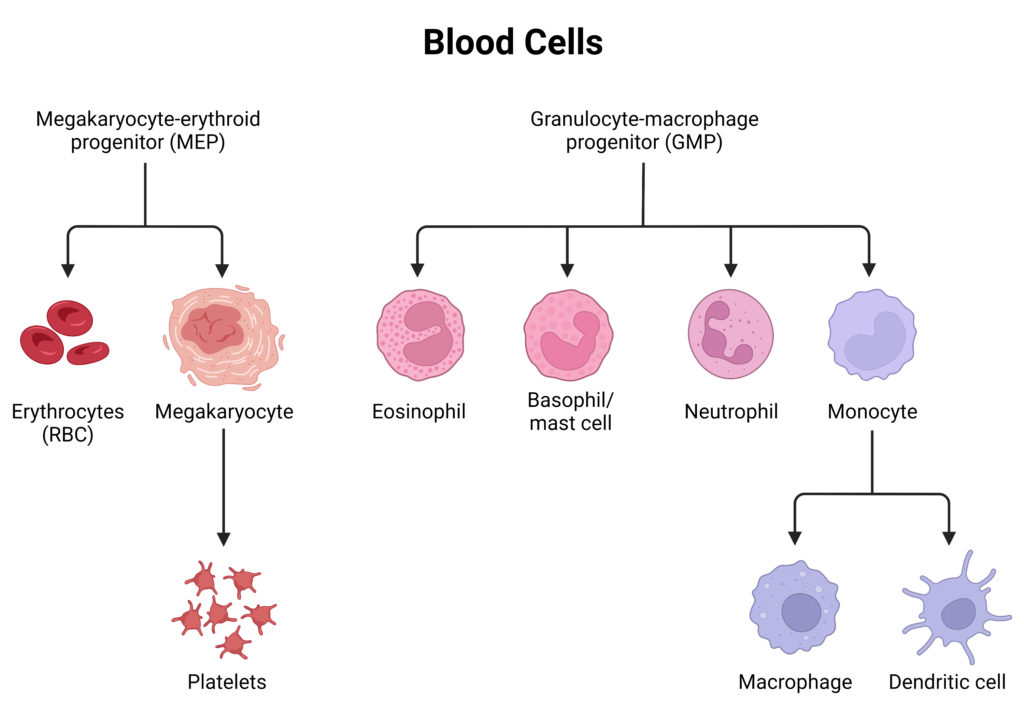
Epithelial Cells
Epithelial cells form the linings and surfaces of various organs and body cavities.
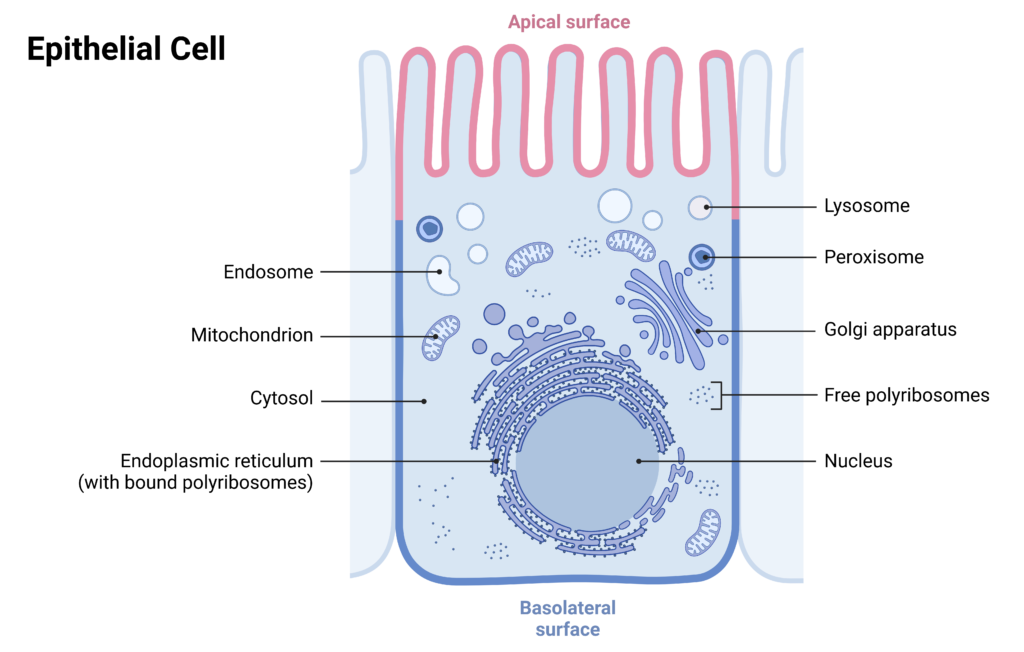
They serve as a protective barrier, regulating the exchange of substances between the internal and external environments.
Germ Cells
Germ cells are specialized cells responsible for reproduction.
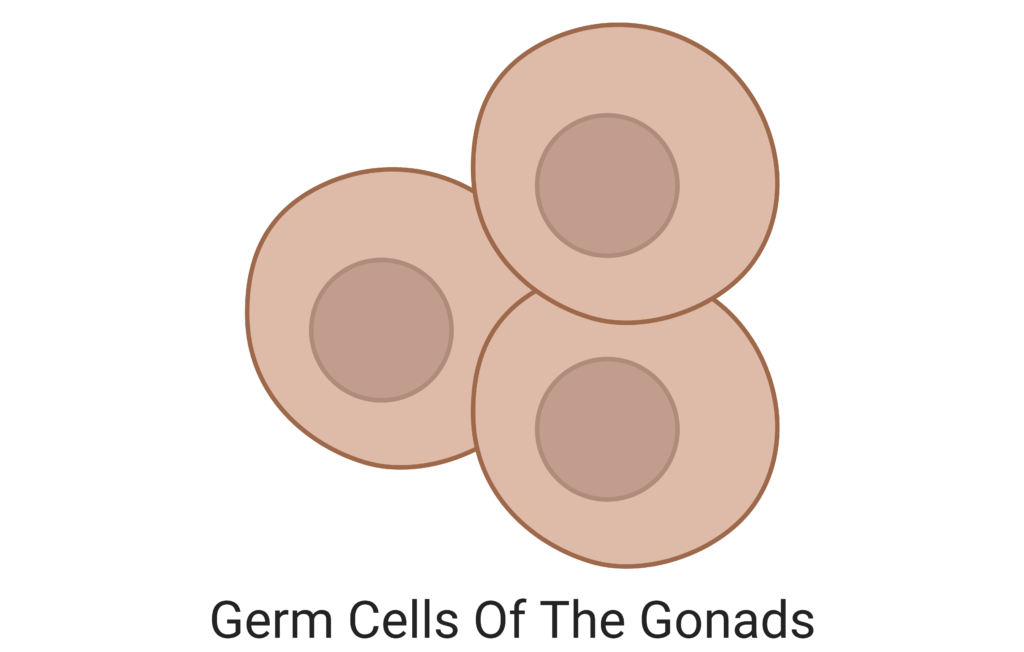
These cells carry the genetic material needed to create new organisms and are vital for passing on traits to the next generation.
Cancer Cells
Cancer cells are abnormal cells that grow uncontrollably, leading to the formation of tumors. Understanding these cells is crucial for developing effective treatments and prevention strategies against cancer.
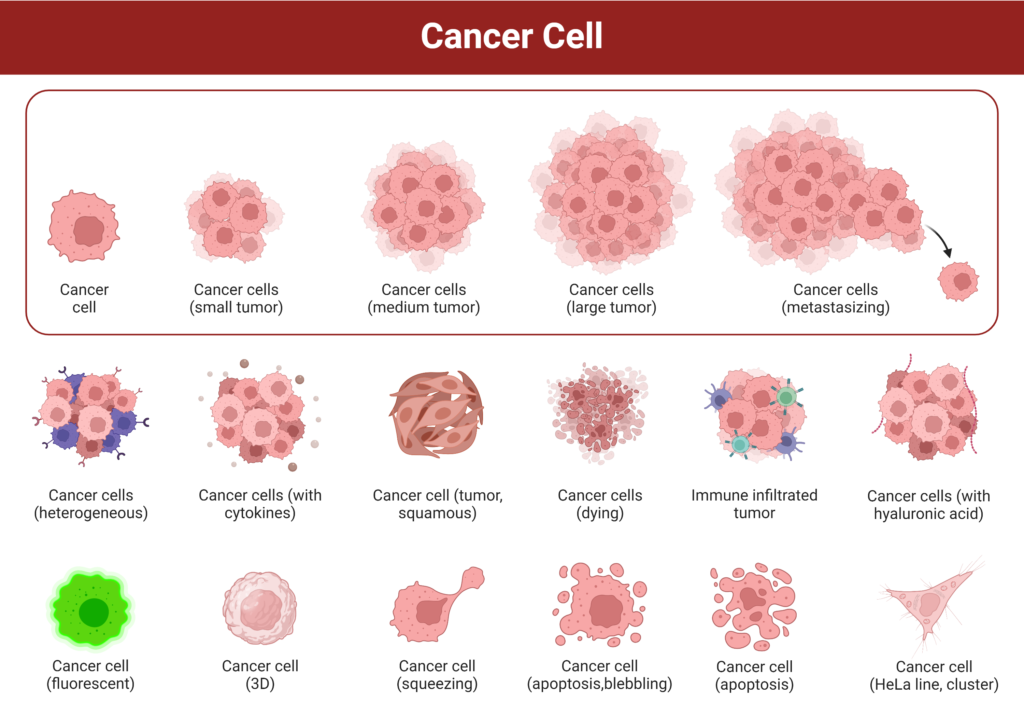
By exploring the diverse array of cell types, we gain a deeper appreciation for the complexity of life and the vital roles each cell type plays in maintaining the delicate balance of the living world. From the tiniest microorganism to the grandest multicellular organism, cells stand as the silent architects that shape the very fabric of life.
4. Functions of Cells

Cells are involved in a multitude of essential functions that sustain life:
Energy Production
One of the primary functions of cells is energy production. Through a process called cellular respiration, mitochondria within the cell convert nutrients, such as glucose, into adenosine triphosphate (ATP), the energy currency that fuels various cellular processes.
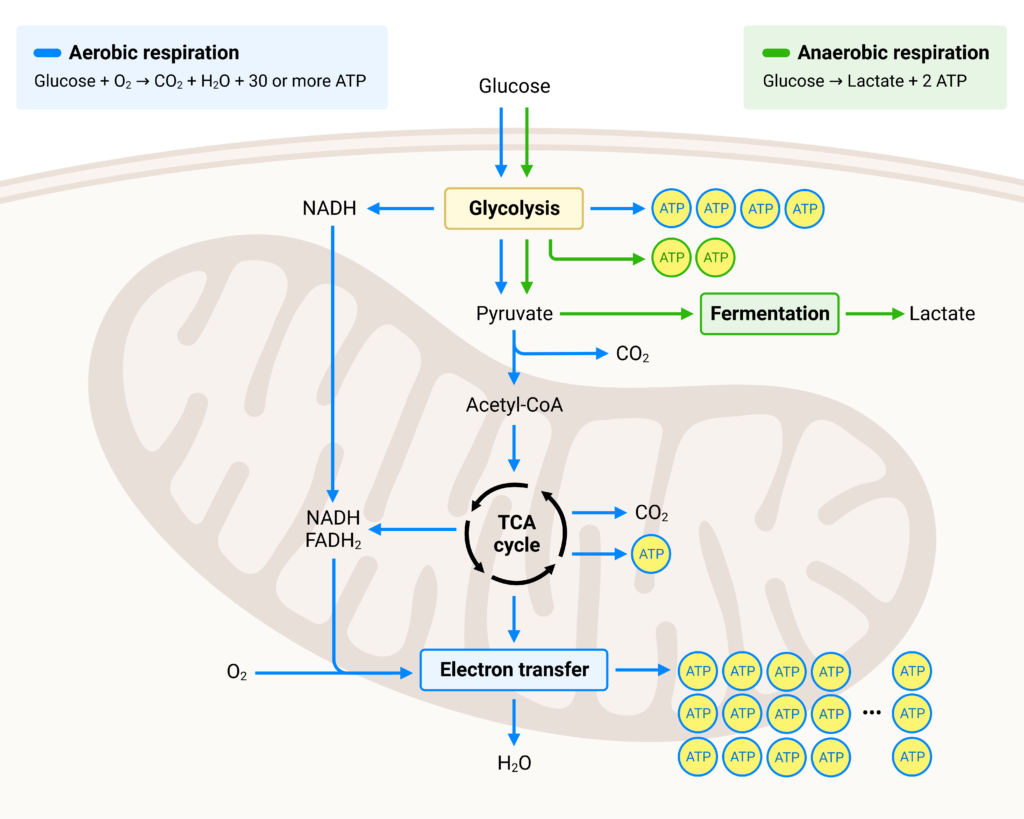
This vital function ensures that organisms have the energy required for growth, movement, and maintaining essential life functions.
Protein Synthesis
Cells are proficient protein factories. They use their organelles, such as ribosomes, to synthesize proteins based on the instructions provided by the genetic material in the nucleus. Proteins play diverse roles in the body, acting as enzymes, structural components, hormones, and transporters, among other crucial functions.
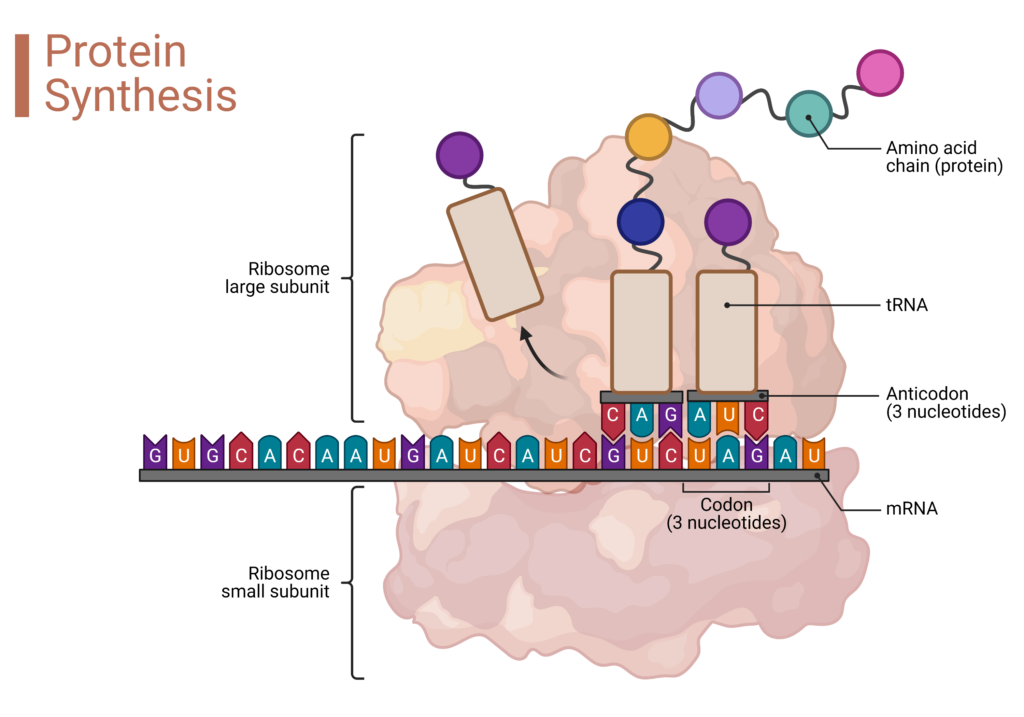
Waste Removal
Cells engage in waste removal, clearing out harmful substances and metabolic by-products. Lysosomes, specialized organelles containing enzymes, serve as cellular garbage disposals, breaking down waste materials and recycling them for future use. This process helps maintain cellular health and prevents the accumulation of toxic substances.
Reproduction
Cellular reproduction ensures the perpetuation of life. Through cell division, a single parent cell duplicates its genetic material and divides into two identical daughter cells. This process is essential for growth, tissue repair, and the development of multicellular organisms.
Cell Signaling
Cells communicate with each other through chemical signals in a process called cell signaling. These signals regulate various cellular activities, including growth, differentiation, and response to environmental changes. Hormones, neurotransmitters, and growth factors are examples of signaling molecules.
Cell-to-Cell Adhesion
Cells possess specific molecules on their surfaces that enable them to adhere to neighboring cells and form tissues. This adhesion is crucial for the structural integrity and function of tissues and organs in multicellular organisms.
Homeostasis
Cells contribute to maintaining internal balance, or homeostasis, within an organism. They monitor and regulate factors such as temperature, pH levels, and nutrient concentrations to ensure optimal conditions for cellular processes.
Immune Response
Cells play a central role in the body’s immune response. White blood cells, like lymphocytes and phagocytes, actively identify and neutralize pathogens, protecting the organism from infections and diseases.
Nutrient Storage
Cells act as reservoirs for storing essential nutrients. For instance, liver cells store glycogen, a glucose polymer that can be broken down and released into the bloodstream when the body needs energy.
Movement
Certain cells, like muscle cells, possess specialized structures that allow them to generate force and contract, enabling movement within the organism. Muscle cells are vital for locomotion and various physiological functions, such as pumping blood and breathing.
Sensory Reception
Nerve cells, or neurons, are responsible for sensory reception. They detect external stimuli, such as light, sound, touch, and temperature, and convert these signals into electrical impulses for transmission to the brain.
Cell Defense
Cells have evolved mechanisms to protect themselves from potential threats. For instance, the ability of a cell to undergo programmed cell death (apoptosis) is crucial in removing damaged or potentially harmful cells.
Cellular Respiration
Cellular respiration is the process by which cells extract energy from nutrients. It involves a series of metabolic reactions that occur in the mitochondria, ultimately producing ATP, the energy source for cellular activities.
Cell Growth and Differentiation
Cells undergo growth and differentiation to become specialized for specific functions. During development, cells differentiate into various types, such as nerve cells, skin cells, or blood cells, allowing them to perform specific roles within the organism.
Regeneration and Repair
In some organisms, cells possess the remarkable ability to regenerate damaged tissues and repair injuries. This capacity is particularly evident in certain types of tissues like the liver and skin, enabling the organism to recover from trauma and maintain its overall functionality.
Overall, cells are extraordinary entities that execute a wide array of essential functions, serving as the building blocks of life. From energy production and protein synthesis to immune response and tissue regeneration, their diverse roles contribute to the harmonious functioning of living organisms. Understanding these vital cellular functions is key to unlocking the secrets of life itself and advancing medical research for the betterment of humanity.
5. Significance of Cells

The significance of cells in the realm of biology cannot be overstated. These microscopic building blocks form the very foundation of life and underpin the functionality of all living organisms. Cells are involved in an array of vital processes, including energy production, protein synthesis, and waste removal. Their ability to replicate and divide enables growth, development, and tissue repair. Moreover, cells play a pivotal role in human health, as their dysfunction can lead to various diseases and medical conditions. By comprehending the intricacies of cellular biology, scientists and researchers gain crucial insights into disease mechanisms, paving the way for innovative medical treatments and therapeutic interventions.
Cells hold immense potential in revolutionizing the fields of biotechnology and genetic engineering. Understanding their genetic makeup and intricate molecular machinery allows scientists to manipulate and engineer cells for beneficial purposes. This has led to groundbreaking advancements, such as gene editing technologies like CRISPR-Cas9, offering the potential to cure genetic diseases by precisely targeting and modifying faulty genes. Moreover, stem cells, with their remarkable ability to differentiate into various cell types, hold promise for regenerative medicine, offering hope for treating degenerative conditions and injuries. The study of cells continues to drive groundbreaking research, unlocking new avenues for innovation and transforming the landscape of modern healthcare.
As we delve deeper into the mysteries of cells, we gain a profound appreciation for the interconnectedness of all living beings. From the tiniest microorganisms to the complex human body, cells provide an essential link that unites the diverse spectrum of life on our planet. The study of cell biology fosters a sense of wonder and curiosity, inspiring future generations of scientists and researchers to explore the frontiers of scientific knowledge. By promoting public awareness about the significance of cells and their role in sustaining life, we can foster a deeper appreciation for the intricate complexities of the natural world and the delicate balance that cells maintain within our bodies and the ecosystem at large.
6. Conclusion

In conclusion, the world of “cells” is an awe-inspiring microcosmos that holds the keys to understanding life’s intricate workings. These microscopic powerhouses play a pivotal role in sustaining all living organisms, from the simplest bacteria to the most complex human beings. As we’ve journeyed through the wonders of cell biology, we’ve uncovered the significance of cells in fueling energy production, driving protein synthesis, and enabling the replication necessary for growth and development.
Moreover, the study of cells extends beyond the realms of basic biology. Researchers and medical professionals are constantly delving into cellular biology to unravel the mysteries of various diseases and uncover groundbreaking treatments. By harnessing the potential of cells, regenerative medicine offers hope for restoring damaged tissues and organs, revolutionizing the field of healthcare.
As we conclude this exploration, it is evident that our understanding of cells is far from complete, leaving endless possibilities for future discoveries. Embracing the fascination of cellular biology can only lead us further down the path of scientific progress and deeper into the heart of life itself. So, let us continue to cherish and explore the remarkable world of “cells” to unlock the potential of health, knowledge, and the marvels of existence.




